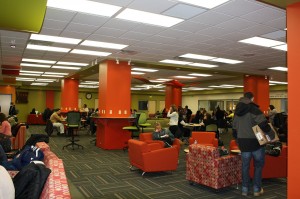By Nicole Brigg
Contributing Writer
Many seniors were shocked by the news that the traditional event 100 Nights was canceled this year. The Office of Alumni Relations and the Career Development Center, who host the event, have a replacement for it in the planning stages.
“We are all working extremely hard to plan a new tradition and hope to far exceed expectations and quell any initial disappointment associated with the cancellation of 100 Nights,” said Michelle Beck ’11, a 2011 Homecoming host who is on the student planning committee for the event.
100 Nights was a celebration that began a countdown to mark the last days until graduation. There were slideshows played and pictures taken. Students were able to look back through their scrapbooks they made for First Night their first year. They saw this as one of their last chances to all be together and look forward to commencement.
Since the event began in 2006, its purpose was to connect the senior class in a meaningful and lasting way, but throughout the years the significance of the special occasion disappeared.
“The trend our office saw was the event turning farther and farther from its original goals,” said Jenna Tesauro, Manager of Extracurricular Interests in the Office of Alumni Relations.
Now, they are committed to sponsoring an event that goes above and beyond what the students could do independently to bond themselves as a class.
“Specifically, excessive alcohol consumption and other safety issues became a problem in the past few years and presented a liability risk to the University,” Beck said. Problems even went as far as vandalism.
The Office of Alumni Relations takes full responsibility for the way in which the news was broken to the senior class. “The timing was not ideal,” Associate Director of the Office of Alumni Relations Kristin Stetler said. “But 100 Nights is changing into something much more meaningful.”
Committees of both members of the Office of Alumni Relations and members of the senior class have been working to develop a new event to replace 100 Nights.
“Through discussions with the Office of Alumni Relations and Career Development, the Homecoming hosts and hostesses and BSG 2011, it has been proposed to host an event, paired with a formal dinner, for all members of the Class of 2011 to formally gather prior to the end of the semester,” Beck said.
Elements of the old event will remain, such as the slideshow, as well as possibly having a photo booth and a professional photographer present to record the memories.
This event is tentatively scheduled for April 1, 2011.
